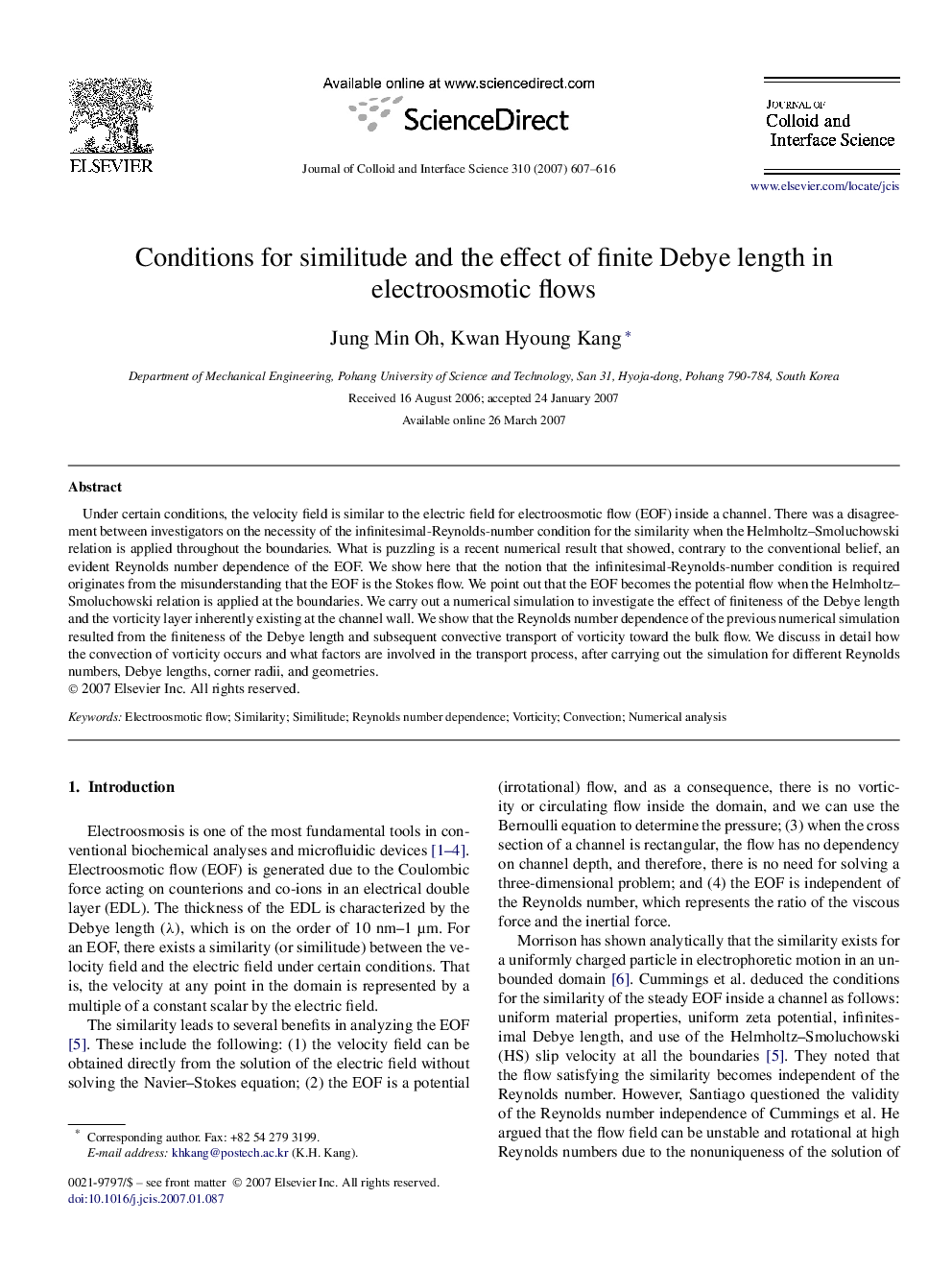| Article ID | Journal | Published Year | Pages | File Type |
|---|---|---|---|---|
| 612449 | Journal of Colloid and Interface Science | 2007 | 10 Pages |
Under certain conditions, the velocity field is similar to the electric field for electroosmotic flow (EOF) inside a channel. There was a disagreement between investigators on the necessity of the infinitesimal-Reynolds-number condition for the similarity when the Helmholtz–Smoluchowski relation is applied throughout the boundaries. What is puzzling is a recent numerical result that showed, contrary to the conventional belief, an evident Reynolds number dependence of the EOF. We show here that the notion that the infinitesimal-Reynolds-number condition is required originates from the misunderstanding that the EOF is the Stokes flow. We point out that the EOF becomes the potential flow when the Helmholtz–Smoluchowski relation is applied at the boundaries. We carry out a numerical simulation to investigate the effect of finiteness of the Debye length and the vorticity layer inherently existing at the channel wall. We show that the Reynolds number dependence of the previous numerical simulation resulted from the finiteness of the Debye length and subsequent convective transport of vorticity toward the bulk flow. We discuss in detail how the convection of vorticity occurs and what factors are involved in the transport process, after carrying out the simulation for different Reynolds numbers, Debye lengths, corner radii, and geometries.
Graphical abstractThe breakdown of similarity and the Reynolds number dependence of electroosmotic flows result from the finiteness of Debye length and the subsequent convective transport of vorticity toward the bulk flow.Figure optionsDownload full-size imageDownload as PowerPoint slide
